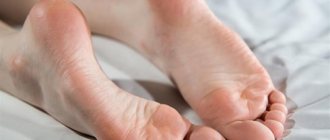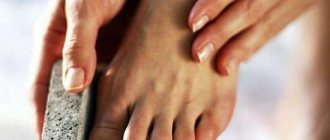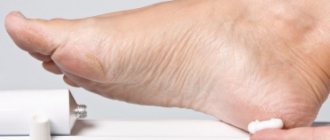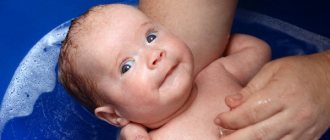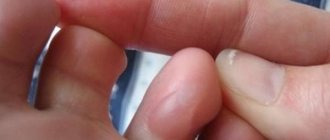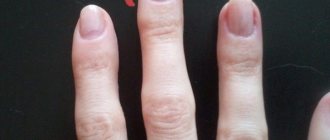Many people know first-hand what corns are. On the one hand, this cosmetic defect does not represent anything dangerous. On the other hand, the problem gradually progresses and leads to unpleasant consequences. At first it is very small and does not cause any inconvenience. But if left untreated, the corns increase in size and thicken. Now it covers all new areas. Large and dense growths cause discomfort when walking.
But that's not all. Disruption of cell nutrition in calluses leads to the appearance of cracks. Through them, infection freely penetrates into the inner layers of the skin. And this is the first step towards inflammatory processes and suppuration. That is, ointments for corns are a very necessary and important achievement of the modern pharmaceutical industry. But today in pharmacies you can find not only ointments, but also other means to combat dry calluses.
Advantages and disadvantages
As a rule, salicylic acid is included in the composition of such ointments. Therefore, a reasonable question arises: how effective are ointments for corns than creams or patches? This dosage form has its pros and cons. The ointment is convenient to store in a closed tube; most often it is the most accessible dosage form of all existing ones. In addition, people note high efficiency and quick results.
However, there are also disadvantages. Ointments for corns must be used very carefully so that the product does not come into contact with healthy skin. It is imperative to test for an allergic reaction, since such an outcome is quite possible. Finally, it should be noted that ointment for corns on the feet will not help if the form is advanced.
Quick help at home
Despite the unpleasant appearance of corns: yellow color, cracks and roughness, this is not the biggest problem. Dry callus significantly reduces the sensitivity of the skin of the feet, and after a while causes pain when walking and can result in the development of an inflammatory process.
How to remove corns on heels at home? Treatment consists of directly getting rid of rough skin and eliminating the original cause. To do this, you need to change your shoes to softer and more comfortable ones, be sure to wear socks and maintain foot hygiene. In some cases this will be sufficient, in others additional measures are required.
At the initial stage, you can quickly get rid of corns on your heels on your own. The first step should be steaming your legs. Special baths are used for this.
Foot steaming and pumice stone treatment
It’s easy to prepare: pour 4 liters of warm water into a convenient container and add a bar of soap until it is completely dissolved. Keep your feet in the water for half an hour. Gently rub the steamed skin with a pumice stone. Wipe the surface of your feet dry with a towel. In this way, the keratinized layer of cells will be removed.
A faster result can be easily obtained if, instead of soap, you add substances that have a softening and healing effect. This will not only help make the epidermis softer, but also heal cracked heels.
Ingredients for baths:
- Soda (2 tbsp);
- Ammonia (2 tbsp);
- Milk (2 tbsp.) or sour cream, cream (2 tbsp.);
- Sea salt (2 tbsp);
- Herbal decoction of chamomile, calendula or thyme (1:1 in proportions to warm water).
After the procedure, you should consolidate the result of renewed skin by applying moisturizing ointments or creams.
Foot baths are effective in the case of old formations, when removing corns on the heels without preliminary manipulation is problematic.
Products with a keratolytic effect can help in the fight against corns:
- Salicylic ointment;
- Bensalitin ointment;
- Paste “5 days” for calluses;
- Cream "Doctor";
- Cream "Foot Relax".
The maximum result is achieved when using the above ointments on steamed skin of the legs. This enhances the therapeutic effect and helps get rid of corns much faster.
Products based on salicylic acid with keratolytic action
If a corn on your heel hurts, you can use the Compeed healing patch. It prevents heel friction, thanks to the components it contains, it reduces pain and softens keratinized areas of the skin. The hydrocolloid polymer included in its composition relieves pain.
Compeed brand patches are available in various shapes, so they are convenient to use on different parts of the foot: on the heel, on and between the toes, and on the sole.
Plasters for corns
"Mozolin" for the health of your feet
First of all, it is advisable to determine the reason why the callus began to develop. Very often it lies on the surface, namely, wearing uncomfortable shoes. Ointment for corns on the feet will only help if the cause is temporarily eliminated, that is, if you change your shoes.
But now you can deal with the consequences. “Mozolin” is a mixture of camphor and ammonia, Kenyan pepper and alcohol, with the addition of a small amount of badyagi. In the evening, you need to steam your feet well in the bath, then apply cotton wool with ointment to the callus and fix it. Place a sock on top for additional temperature control. In the morning, remove the bandage. If the growth does not soften, the procedure can be repeated again.
Customers' opinions about the effect of this product are divided. Some call him a real savior, others prefer to choose something else. The reason is that corns have different natures. “Mozolin” works great when the skin becomes rough and a corn forms due to rubbing with uncomfortable shoes.
Causes and signs of corns
Doctors believe that calluses on the feet appear in older people, more often in women than in men.
Causes of the defect:
- diabetes;
- overweight;
- psoriasis;
- ichthyosis;
- skin fungus;
- flat feet;
- keratoderma;
- circulatory disorders in the lower extremities;
- profuse sweating;
- deformation of leg bones;
- wearing narrow and smaller shoes with poor soles;
- stressful situations;
- high-heeled shoes (water calluses form).
Poor quality pads and insoles provoke the appearance of calluses on the feet.
Socks that are not the right size will slip off, the presence of a hole in them affects friction with the sole, and a callus with a stem may form. Signs of roughness:
- swelling;
- decreased sensitivity;
- periodic pain when walking.
If the defect is not removed, ulcers will form.
Everything new is well forgotten old
Today there is such a selection of different medicines in pharmacies that you can get a little confused. An ointment for calluses and corns may be sold in beautiful packaging and be well advertised, but in reality it turns out to be the same salicylic acid. Therefore, before purchasing, be sure to study the composition. Salicylic ointment is quite inexpensive, but despite this, it is the best remedy for treating wet calluses. Its cost is only 20 rubles, despite the fact that the consumption of the product is very small.
Judging by the reviews of doctors and patients themselves, salicylic ointment for corns is the best way to combat this problem. But it works best on wet calluses. Due to the active component, microbes are destroyed and inflammation is relieved, the affected area dries out and tissues are restored. Therefore, if you choose a budget option, then you should stop at this.
Prevention
Treatment always takes time and effort, so it is better to protect yourself from the appearance of growths on the skin. By following these simple tips, you won't have to worry about getting corns:
- Choosing the right shoes. Give preference to shoes made of soft materials; they must fit exactly on your feet and not be too small, narrow or tight. Put high heels aside: the optimal height is 5 cm for daily wear, everything else is suitable only for special occasions;
- Skin care on the feet. Be sure to maintain hygiene: wash your feet daily, apply a nourishing or moisturizing cream, take steaming baths, remove dead skin with a pumice stone for your feet;
- Monitor your health. If you have flat feet, wear special orthopedic insoles; an orthopedic doctor will help you choose them. If the cause of corns is excess weight, then it is necessary to normalize it. Diabetes mellitus and hormonal disorders are a reason to consult your doctor to get rid of symptoms.
Dryness and calluses can occur in anyone. It is advisable to prevent their formation, but otherwise, you can use traditional methods of treating corns. To do this, you just need to be patient and perform all the required actions, and then the effect will not be long in coming.
Preparation based on two acids
If simple salicylic acid no longer helps you, then you should try Bensalitin ointment. In its composition, the effect of salicylic acid is supplemented and enhanced by benzoic acid. This duet has a keratolytic, local irritant and antiseptic effect. The drug accumulates in the stratum corneum and gradually causes its destruction. That is, the entire dense growth comes off, and healthy skin forms underneath. Judging by the reviews, this particular remedy is much better suited for the treatment of dry corns.
To remove calluses, you need to take a foot bath and steam the skin well. Don't forget to lubricate the entire area around the corn with Vaseline. Now apply the ointment only to the affected area and cover it with a bandage on top. It is advisable to spend several hours at rest and then remove the bandage. It is recommended to use until the corns go away.
Laser therapy
Getting rid of corns using a laser is a painless and effective method. The beam acts strictly on the affected areas. Thanks to this, the healthy skin around the corns is not affected. At the same time, the disinfecting effect of the laser beam protects against infection by various infections and from pathogenic bacteria entering the wound.
After the procedure there is no need for special foot care. You can continue to do your usual activities without experiencing any more pain and discomfort caused by dry calluses.
Unlike cryodestruction, the effect of the laser beam on the skin is not noticeable. During the procedure, the patient does not experience any sensations. This method is suitable for those who have a low pain threshold. Laser therapy only needs to be done once. Therefore, it is better to spend money on this expensive procedure than to constantly purchase keratolytic products for home treatment.
From simple to complex
If the previous product includes one active ingredient, then the ointment for calluses and corns “Antimozolin” already has two active ingredients. Thanks to this duet, manufacturers claim to be the best remedy for combating dry and old corns.
The composition includes urea and lactic acid. They effectively soften rough skin on the feet. However, to achieve a good effect, you need to follow the instructions for use. The ointment should be applied in a thick layer to the problem area after steaming. After this, wrap it with wax paper or film and secure the bandage well with a bandage.
The best folk remedies for calluses and corns
In folk medicine there is always a recipe that will help cope with this or that problem. In addition, these are absolutely natural and safe products. However, this process is not quick and requires patience and regularity.
Compresses:
- Onion compress. Regular onions are the most effective in the fight against corns and dry calluses. One onion must be cut into slices and poured with vinegar. Place in a dark place for a day. After this, apply onion slices to the problem area and leave it overnight, after wrapping it in a bandage and putting on cotton socks. In the morning, rinse the skin and lightly treat it with a non-rough brush. Repeat the procedure daily for a month. Depending on how advanced the case is, less time may be needed. The disadvantage of this compress is the strong residual smell of onions.
- Propolis. Fresh propolis is crushed and applied to the problem area, fixed with a clean gauze bandage and left for the whole day. Before going to bed, you need to rinse and steam your feet well, then apply a new compress and leave until the morning. The procedure must be repeated twice a day for at least a week. Such a compress will help to cope with calloused seals in a short time.
Herbal compresses:
- Aloe. An aloe leaf, cut lengthwise, should be applied to the rough area of skin, secured with a bandage and plastic wrap, and a warm sock put on top. After 10-12 hours, the softened callus can be treated with non-rough pumice. Aloe juice will help soften the stratum corneum of the skin, but the procedure must be carried out regularly and for at least a month.
- Celandine. For the compress, you will need to prepare a paste of celandine leaves, which is applied to the problem area and left for the whole day or night. This plant has an antiseptic effect, so it will be especially useful in case of painful cracks. The method is effective, but lengthy; the procedures require regularity.
Oil compresses:
You can use absolutely any oil for this procedure. The method of application is very simple: socks made of natural fabric are soaked in oil and put on, covered with polyethylene on top, then another pair of warm socks. The time of one procedure is 10-12 hours. This compress will soften the keratinized area and give the skin smoothness. In addition to eliminating calluses, the product will help moisturize dry and flaky skin.
Therapeutic foot baths:
There are a huge number of recipes. You can choose one or more and alternate their use. The recommended frequency of procedures is 3 times a week. Here are some effective recipes:
- Serum-based baths. A simple and very effective recipe. It is necessary to keep the legs in the heated serum for about 30 minutes. Then rinse with water and apply any cosmetic oil. Wrap your feet in bags and warm socks and leave for 8-10 hours. The advantage of such a bath is that there is no need to rub rough areas with pumice, because The serum promotes the resorption of dead cells.
- Salt bath. Unlike many others, this bath is taken cold. The solution is made at the rate of 1 tbsp. spoons of salt per liter of water. The duration of the procedure is about half an hour. Softened calluses are removed with a pedicure brush. After completion, it is necessary to treat the surface with an antiseptic and then apply cosmetic cream. A salt bath helps soften rough skin and also relieves pain.
- Bath with ammonia. Grate 20 grams of laundry soap and dissolve in 2 liters of heated water, and add a teaspoon of ammonia. Keep your feet in this solution for 40 minutes. After completing the procedure, you should apply a nourishing cream to the skin of your feet.
- Bath with hydrogen peroxide. To prepare such a bath, you need 2 tbsp. spoons of hydrogen peroxide per 1 liter of water. Despite the simplicity of the composition, this solution is very effective. After the procedure, using pumice will be very effective.
Folk remedies are effective in the fight against rough skin. But to achieve results, any recipe, be it compresses or baths, or a combination of both, requires regularity and patience.
"Stop Corn"
You can try using this ointment as the most gentle remedy. Its action is based solely on the action of lactic acid. That is, you protect your skin as much as possible from the negative effects of aggressive components. Lactic acid is related to our body, but at the same time it effectively softens corns and has anti-inflammatory and antibacterial effects. In addition, it also has a pronounced cosmetic effect, smoothes and revitalizes the skin.
How long does the course of treatment with Antimozolin last?
It all depends on the specific case. If the problem has appeared for a long time, and there has been no treatment, then a number of procedures may be required until you notice the first signs of improvement. In any case, perform the procedure daily until the dry callus completely disappears. The cost of the ointment is small, only 70 rubles. It can also be used as a preventive measure. If you notice a dry and rough area of skin, feel free to lubricate it and cover it with film. You can leave the bandage on for a few hours or overnight.
Judging by the reviews, Antimozolin helps in a number of even the most difficult cases. Dry corns go away very slowly, but this medicine helps to get results very quickly.
Symptoms, signs and stages of the formation of corns and calluses
- Irritation, redness.
- The appearance of edema.
- At the site of irritation, the skin becomes dry.
- The affected area of skin first becomes white, then yellow.
- Decreased sensitivity of the skin.
- The appearance of several layers of skin on the affected area of the foot.
- The appearance of pain during movement.
At any stage of the formation of dry calluses, cracking of the skin is possible. The resulting wounds are painful and take a long time to heal. Corns can be detected by examining the lower extremities. If treatment is not taken in time, complications are possible.
Skin cracking
Your doctor may prescribe a surgical method for removing corns. Rough skin and rods during movement cause pain and further appearance of cracks.
Wounds can become infected and sepsis can add to an existing problem. The inflammatory process spreads not only in the area of corn formation, but also to the adjacent skin. People suffering from diabetes should closely monitor that microtraumas do not form on the soles, as they take 2 times longer to heal.
Cream "Nemosol"
As you can see, many ointments for corns on the feet contain salicylic acid. This is not surprising given its low cost and exceptional efficiency. The active substances of this drug are:
- Glycolic acid, which is famous for its properties to restore the skin and saturate it with moisture, has an antiseptic and antifungal effect.
- Salicylic acid, which promotes the rejection of hardened cells and suppresses bacterial infection.
What do buyers say about this medicine? Many people find it very effective. Reviews confirm that it can be safely left on calluses for several days. The most important thing is to secure the bandage well. Usually after two days the callus can be removed using a pumice stone. If the effect is not achieved, then the procedure can be repeated 3-4 times. In this case, the callus should disappear completely.
What are corns and calluses, signs
The surface layer of skin on a person’s foot is periodically damaged during movement. Constant mechanical irritation leads to the formation of corns and calluses. A corn is a hard formation on the skin that appears as a result of the death of cells and their accumulation in the area of damage.
The keratinization of the skin is accompanied by pain and discomfort. The appearance of corns is similar to a callus.
Types of corns:
- Core (hardening on the skin without a clear boundary, in the center of the rough skin there is a dense core).
- Plantar.
- Finger (growths form between the fingers on the inside).
A callus is a keratinization of the skin as a result of mechanical friction of the foot and shoes.
Types of calluses:
- A dry callus is a hard formation on the skin consisting of several layers of non-living epithelial cells.
- A callus is a formation on the skin in the form of a bubble, inside of which there is liquid. The purpose of the liquid is to protect the skin from subsequent damage. More often, blisters occur on damp skin.
Reasons for the formation of corns and calluses:
- Wrong shoe size. In shoes of a smaller or larger size, during the period of movement, interaction is created between the skin and the walls of the shoe. As a result of incorrect foot placement, pressure is created on various parts of the foot and damage to them, followed by the formation of a corn or callus.
- Excess body weight. Under the influence of a large weight, a load is created on a person’s feet. A person begins to use shoes with solid soles more often, which leads to flat feet. The deformation leads to mechanical friction between the foot and the shoe, resulting in thickening of the skin.
- Large amount of physical activity. Frequent movement leads to prolonged exposure to external objects on the legs. As a result, the skin becomes rough and a corn forms.
- High heel. The main load is placed on the fingers and the part adjacent to them, on which painful wounds appear. Excessive pressure on the toe leads to frequent division of skin cells and their layering.
- Non-breathable shoe material. Staying in shoes for a long time that do not provide the necessary ventilation leads to increased sweating. Wet skin is more easily injured during friction.
- Frequent walking without shoes or socks. The body tries to protect the delicate skin of the legs from external objects, as a result the skin becomes thicker. The formation of several layers leads to the appearance of corns and calluses.
- Flat feet.
- Presence of foreign objects in shoes. A speck or pebble creates additional friction, as a result of which the skin is injured and dry calluses or blisters appear.
- Fungus. Parasitic fungi infect the skin. The skin becomes dry and irritated. During the period of movement, friction is created, the affected cells die and become layered. Such damage is difficult to treat.
- A worn-out insole creates friction throughout the entire movement, even if the shoes are comfortable. This friction leads to redness and roughening of the skin.
For connoisseurs of nature's gifts
There are people who primarily choose medicines whose action is based on extracts of medicinal plants and herbs. The best among them can be called the “Mountain Celandine” balm. However, it has a strong odor and can cause an allergic reaction, so be careful.
Contains extracts of celandine and gentian, string and rhododendron, lance-shaped poop. The composition is applied to dry calluses twice a day for 2-10 days. During use, you need to monitor the condition of the application site; ichor may be released. Many of those who have tried the effect of this ointment on themselves confirm that the effect is good, but not everyone likes the specific smell.
Rating of the best cosmetics for calluses and corns for 2020
Uroderm ointment for external use 30%
Uroderm ointment is intended for the treatment of fungal diseases, as well as to eliminate dryness and dead skin cells. To soften corns and dry calluses, apply the ointment to the problem area and leave for 1-2 hours. Then clean off the stratum corneum with pumice.
The urea-based composition effectively softens the skin and promotes exfoliation.
Since the product is concentrated, it is not recommended for use on large areas of the skin during pregnancy and lactation, as well as in case of liver, kidney and heart failure.
Price: from 300 rubles for 35 g. Country of origin: Russia.
Uroderm ointment for external use 30
Advantages:
- antifungal effect;
- softens the skin well;
- wide spectrum of action;
- no strong odor.
Flaws:
- small volume;
- there are contraindications.
Natura Siberica Active foot care cream for calluses
The cream from Natura Siberica contains such softening and healing substances as beeswax, chamomile and string extracts, Siberian spruce and fir oils, as well as vitamins PP, E, F and D-panthenol. The cream heals wounds and wet calluses in a short time, and then restores the damaged layer of the dermis.
The product has a cumulative effect and requires regular use. The consistency is not greasy, easy to apply and absorb.
Price: from 85 rubles for 75 ml. Country of origin: Russia.
Natura Siberica Active foot care cream for calluses
Advantages:
- budget price;
- effective;
- removes peeling:
- relieves fatigue;
- without parabens and silicones;
- does not cause allergic reactions.
Flaws:
- specific smell.
Vegetable Beauty Foot cream with avocado oil
Thanks to its natural composition, Italian foot cream Vegetable Beauty will gently moisturize the skin of your feet and help in the fight against corns and hardened dry calluses. An extract from the Royal root has a regenerating effect on chapped skin of the feet.
In addition to the softening effect, the cream also has a stylish design, and can decorate with its presence the cosmetic shelf in every girl’s bathroom.
Price: from 449 rubles for 200 ml. Country of origin: Italy.
Vegetable Beauty Foot cream with avocado oil
Advantages:
- no sulfates;
- without parabens;
- without silicones;
- nice smell;
- absorbs well;
- natural composition;
- does not leave greasy marks;
- contains several moisturizing and nourishing oils: avocado, jojoba, sesame and shea.
Flaws:
- not found.
Patch Koelf
Patches are needed not only for the eyes, but also for the heels. Korean Koelf patches are an indispensable tool in the care of dry heels that are prone to the formation of calluses and corns. The active ingredients are urea and papain. Thanks to these substances, the patches nourish and moisturize the skin of the feet. Fruit acids help exfoliate dead skin cells. Already after one procedure, a visible result is noticeable, which lasts for a long period.
Application: Apply patches to problem areas on clean and dry skin of the feet. Leave for 10-20 minutes until the nutrient solution is completely absorbed into the skin. Then remove and rub the remaining product into the skin, at the same time you can massage the heels, which will also give positive results.
Price: from 239 rubles for 1 bag with two patches. Country of origin: South Korea.
Koelf foot patch
Advantages:
- effective from the first use;
- extracts of nutritious herbs in the composition;
- convenient and easy to use.
Flaws:
- not detected.
Asiakiss Exfoliating Foot Sock Mask
South Korean Asiakiss foot mask is an effective remedy for exfoliating dead skin cells. A convenient format for applying a mask in the form of socks soaked in a moisturizing and nourishing solution effectively softens the skin and promotes the healing of cracks. After using the mask, it will take 1.5 - 2 weeks for the skin of the heels to become smooth and soft, and it will remain so for 2-3 months.
Application: The sock mask is put on clean feet and left for 1.5-2 hours. Then rinse off the remaining product with warm water. And after about a week, the stratum corneum of the skin will begin to peel off. You can speed up this process with warm baths. Over the next 5 days, all calluses and calluses will disappear, leaving behind soft heels.
Important to remember! The exfoliation process cannot be accelerated by mechanical actions. The exfoliation of rough skin cells should occur naturally.
Price: from 215 rubles for 1 pair. Country of origin: South Korea.
Asiakiss Exfoliating Foot Sock Mask
Advantages:
- effective;
- suitable up to size 45;
- does not contain harmful substances.
Flaws:
- not found.
Sosu Pedicure Socks Light
Sosu Light socks are a pedicure session without leaving home. With a minimum of effort, you can see excellent results within 10 days. All dead cells are exfoliated naturally. In addition to the exfoliating effect, the solution with which the socks are soaked actively nourishes the skin of the feet.
Price: from 469 rubles for 1 pair. Country of origin: Japan.
Sosu Pedicure Socks Light
Advantages:
- effective;
- do not cause allergies;
- hyaluronic acid in the composition;
- the procedure promotes relaxation;
- the result is the same as after attending a pedicure session;
- eliminates corns, heals cracks.
Flaws:
- not found.
Aravia Professional Callus remover softening gel for corns
Aravia Callus remover gel will effectively replace a salon pedicure session. The action of the gel is aimed at softening and loosening rough skin. Which subsequently allows you to gently remove all calluses and calluses. Chamomile extracts soothe the skin cells of the feet and promote their further restoration after completion of the procedure.
The effect of the gel occurs quite quickly; you only need to apply it to the skin for 5 minutes, and then you can clean off the rough layer with a pedicure file or pumice stone.
Price: from 388 rubles per 100 ml. Country of origin: Russia.
Aravia Professional Callus remover softening gel for corns
Advantages:
- efficiency;
- economical consumption;
- free of sulfates and parabens.
Flaws:
- not detected.
Be natural Callus eliminator
Be natural Callus eliminator is an excellent unedged pedicure that can be done at home. To get the result, just apply the product to the rough areas of the feet for 3-5 minutes, and then clean off the softened stratum corneum with a regular pedicure file.
Such a quick result is achieved thanks to the concentrated formula, which acts only on the stratum corneum, without having a harmful effect on living skin cells. At the same time, the composition does not contain acids or aggressive substances, so the risk of getting a burn is reduced to zero.
Price: from 1,135 rubles per 120 ml. Country of origin: USA.
Be natural Callus eliminator
Advantages:
- efficiency;
- the result lasts for a long time;
- acts quickly;
- does not contain parabens;
- does not contain aggressive components;
- the procedure does not require much effort;
- Can be used during pregnancy;
- The product was developed and approved by dermatologists.
Flaws:
- high price.
Domix Green Professional Liquid blade Removing calluses and seals
The Domix Green Professional liquid blade will help remove corns and calluses at home.
In today's hectic world, it is not always possible to find time to visit the salon. With Domix Green Professional you can get a quality pedicure at home. To do this, just apply the lotion to the problem areas of the foot and after 5-10 minutes, clean off the softened stratum corneum with a file or pedicure grater, and then rinse off the residue with warm water.
Price: from 440 rubles for 70 ml. Country of origin: Russia.
Domix Green Professional Liquid blade Removing calluses and seals
Advantages:
- quick effect;
- quality result;
- affects only dead skin cells.
Flaws:
- not found.
Aravia Professional Foot cream for corns Super moisture
Aravia Super moisture cream is designed to care for dry skin on the feet. The formula based on 10% urea softens rough areas and is an excellent prevention of the appearance of corns and calluses. Natural oils carefully restore skin cells, increasing its elasticity and smoothness. The cream is recommended for daily care, as well as to complete a pedicure.
Price: from 649 rubles for 550 ml. Country of origin: Russia.
Aravia Professional Foot cream for corns Super moisture
Advantages:
- economical consumption;
- absorbs quickly;
- convenient packaging with dispenser;
- free of sulfates and parabens;
- Dermatologist approved.
Flaws:
- not found.
Pasta “5 days”
Quite a popular and inexpensive ointment for corns. Reviews say that this is an excellent remedy for combating calluses that have appeared relatively recently. In this case, just a few procedures are enough to significantly improve the condition of the skin. Contains lanolin and petroleum jelly. These two components soften the rough parts of the skin well, which can then be easily removed with a file. In addition, the composition contains salicylic acid, although the concentration is relatively low. To achieve positive results, you need to undergo a course of treatment for at least 14 days.
Hardware disposal methods
Experts suggest removing corns in the following ways:
- Hardware pedicure, which cleans the affected areas of the foot. The procedure is recommended to be carried out regularly not only to remove growths, but also to prevent corns.
- Cryotherapy using liquid nitrogen. As a result of the procedure, rough tissues soften and the top layer of skin peels off. The method is safe and does not lead to scarring.
- Laser cleaning is a painless procedure. It is carried out in a beauty salon. The essence of the method is burning out corns with a laser beam. The risk of deep tissue infection is reduced to zero. Side effects are rare.
- The surgical method under anesthesia is indicated in advanced cases or in case of tissue infection. The operation involves complete excision of the affected areas with a scalpel, application of sutures and antiseptic dressings.
Therapeutic pedicure can be done at home. To do this, you need to buy a special preparation that softens and removes keratinized tissue. If this method cannot completely cure the corns, you should visit a dermatologist who will prescribe another method of therapy.
Ointment "Lekar" for corns
This is a very popular and effective remedy for dry calluses on the heels or toes. The unique composition allows you to instantly relieve fatigue and pain, a feeling of heaviness, get rid of small cracks, remove peeling and itching. That is, the product immediately solves a whole range of problems that so spoil the mood when you need to leave the house in the summer.
The drug contains olive oil and urea, glycerin and sorbitol, extracts of oak bark and celandine, as well as tea tree oil. This composition instantly saturates the skin with moisture, softens and soothes, and relieves the feeling of fatigue. The cream is applied once a day. That is, it is a preventive care product.
Causes of corns formation
Corns are new growths from the keratinized dermis on the foot that do not have a core. Most often they appear
- on the soles of the feet;
- on the heels;
- under and between your fingers.
Despite the fact that women are more concerned about their appearance and take care of their legs, they still suffer from various skin tumors more often than men. The reason for this is the love of the fair sex for uncomfortable but beautiful shoes with a narrow last and high heels.
Uncomfortable shoes
The main causes of corns:
- Uncomfortable shoes;
- Foot deformity, flat feet;
- Excess weight;
- Metabolic disease.
Poor nutrition
If left untreated, corns can develop into calluses.
Which remedy should you prefer?
There are so many offers on the market today that it is very difficult to settle on just one. However, when talking about which ointment for corns is the best, I would like to first turn to the reviews. Most positive reviews are addressed to products that contain salicylic acid. That is, it is this active component that makes them so effective, and all the rest play only a secondary role.
This means that your home medicine cabinet should always have salicylic ointment for corns. Reviews confirm that it always helps, is very inexpensive, has a pleasant smell and has virtually no contraindications. If after a series of procedures this remedy has not produced a visible result, it makes sense to add an additional drug, but with timely treatment such a need usually disappears.
Cryodestruction
Liquid nitrogen is used in medicine to remove warts, scars and corns. Among all the methods to get rid of dry calluses, cryodestruction or cryotherapy is considered the most painful. After it, the skin takes a long time to recover and requires careful care. In addition, removing corns with liquid nitrogen is an expensive procedure.
However, despite all the disadvantages, cryotherapy also has advantages. So, there is no blood involved, and it takes very little time, which is important for many. Self-treatment requires constant repetition of procedures; you need to carefully put on your shoes. After cryodestruction there are no traces or scars left. The risk that corns will form again in the same place is minimal. For those for whom anesthesia is contraindicated, this is a very successful option for surgical removal of dry calluses. The procedure does not require pain relief. Although because of this you will have to endure unpleasant sensations.
Liquid nitrogen has virtually no contraindications, but it can only be used on a small area of skin. If the corns are large or several calluses are located nearby, cryotherapy will not be suitable in this case. Recovery will be too long and difficult.
